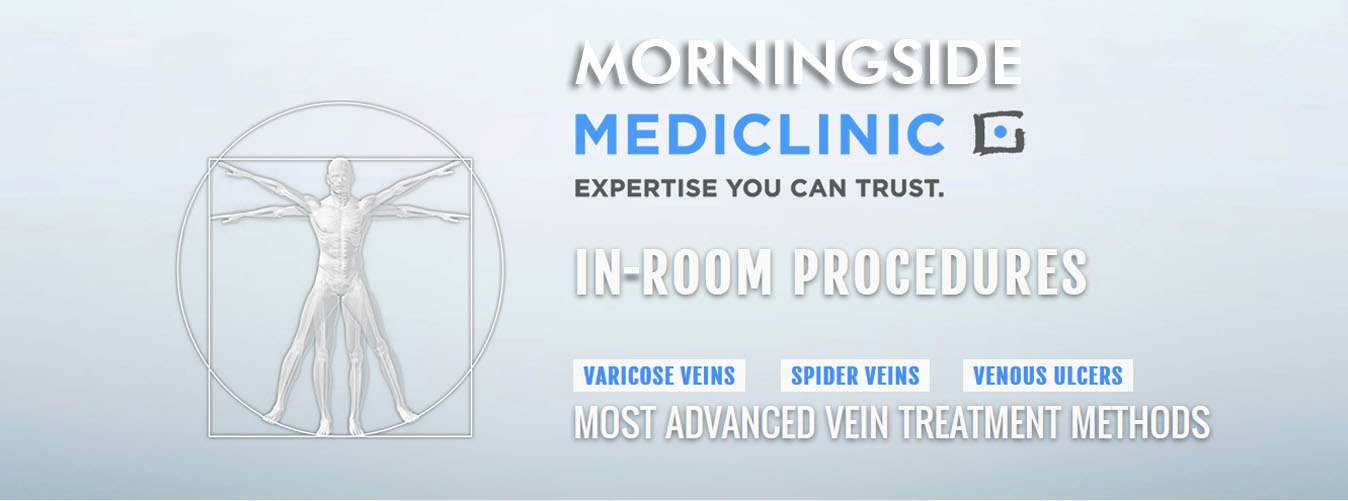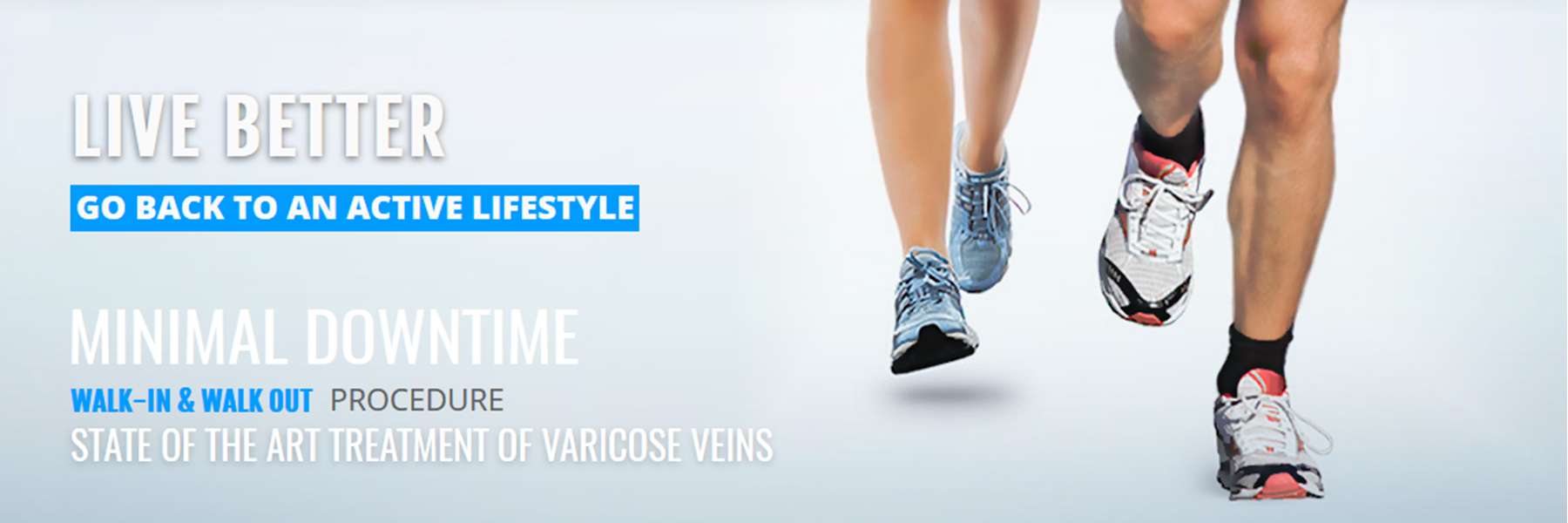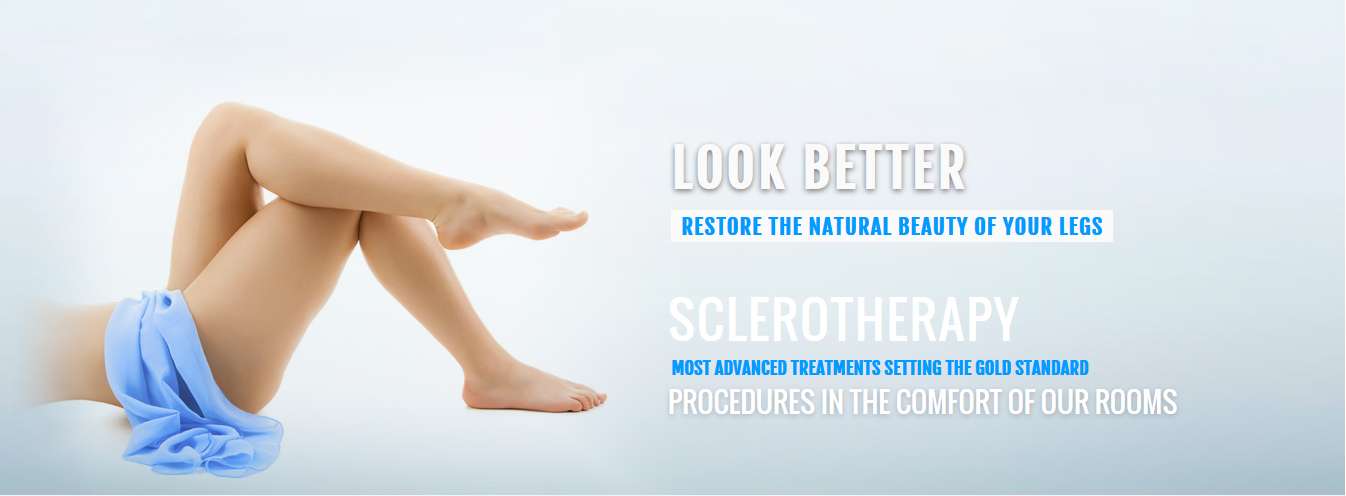Treatment Methods
What to Expect Before and After Treatment?
Before
A physical examination, ultrasound for diagnosing and a complete medical history are necessary to determine which treatment will provide the patient with the best results. The ultrasound screening of the lower extremities will evaluate both the deep and superficial venous systems. The combination of history, physical, and ultrasound is mandatory in determining the source of superficial venous insufficiency or diagnosis of venous reflux disease, as well as, for the purposes of excluding complications where the concern is aesthetic. Based on the ultrasound report and the doctor’s findings, a treatment plan can be formulated.
After
Although most patients can return to work the next day after procedures, some take-home care is required. The dressing on the treated area must be changed as instructed. When a leg is treated, a compression stocking or bandage may be applied as part of the treatment, typically for a day or two although it will vary patient to patient, as prescribed by the doctor.
Radiofrequency Ablation
 |
Famously known as the VNUS Closurefast procedure or the Venefit procedure, it is a gold-standard treatment for varicose veins that utilizes the innovative technology known as radiofrequency ablation (RFA). It uses radiofrequency energy to safely ablate the varicose veins from inside the legs, without having to physically cut and pull out or “strip” the veins. It is a modern alternative to the traditional and far more invasive surgical procedures that were used to remove varicose veins in the past. The VNUS machine is used together with a small catheter that delivers electrical energy in the form of radio waves directly onto the vein wall in order to ablate the varicose veins. The technology was invented by the company Covidien, now a part of Medtronic, which is focused on expanding new vein treatment technology. The VNUS procedure has been shown superior to stripping in numerous clinical trials. There have been over 1 000 000 procedures performed since 1998 and studies have shown a high success rate (approximately 97%) with very low complication rates.
|
How is Radiofrequency Ablation of the Vein Performed?
|
The Radiofrequency ablation procedure starts with the insertion of a micropuncture needle into the vein that will accommodate the guidewire or introducer sheath and, finally, the catheter. Sometimes a tiny incision is made in the skin to gain access to the vein. This opening affords room for a microscopic probe, which is guided by the ultrasound imaging upwards into the saphenous vein. No radiation is used. Local anesthesia is administered to the areas surrounding the vein with the guidance of the ultrasound as well. The catheter is then inserted into the vein for radiofrequency ablation, the positioning of which is further guided by the ultrasound. The heat emitted by the catheter gently shrinks and collapses the target vein, creating a fibrotic seal and closing the vessel, like closing a zipper. Blood flow is naturally redirected upwards into healthy veins as the recovery process begins. In most cases, results are seen almost immediately, and continue improving over a period of about one year. The majority of our patients report tolerating the procedure very well, although some cases will require IV administration of analgesics for pain associated with the procedure. Please see the video presentation if you would like to see how the procedure is performed. |
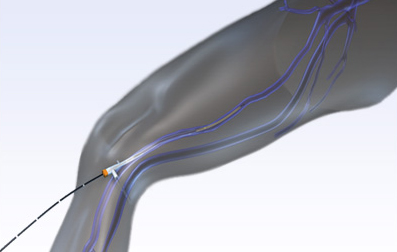 |
Recovery/Results post Radiofrequency Ablation
The procedure has a 95% success rate in ablating the treated veins
Following the procedure, patients can typically return to relatively normal activities immediately, although strenuous activities should be avoided for 7 to 14 days to improve the effectiveness of treatment. In some cases, the wearing of compression stockings or support bandages may be required after the procedure, typically for a period raging between 24 hours to two weeks, as prescribed by the doctor. Some patients may experience a degree of mild bruising, inflammation and/or some mild discomfort at the treatment sites. Since bruising of the skin and further shrinkage of the varicose veins may occur, it can take several weeks before the true results of RFA are visible. Typically, the RFA is a once-off procedure, performed on both legs concurrently where both are effected. Some patients will require additional treatment, such as sclerotherapy to achieve the desired cosmetic or therapeutic results. Although RFA is a safe procedure that has been successfully performed for many years, there can be certain risks and/or side effects associated with it, as with any medical procedure. During your consultation with Dr. Popov he will discuss these possible side effects with you and answer any other questions that you may have about the procedure.
What is Sclerotherapy?
|
Sclerotherapy refers to a treatment consisting of a sequence of injections of a solution into the lumen of a spider vein, perforator vein, larger varicosity or occasionally, a varicose vein. This solution causes the vein wall to close off. This treatment usually consists of more than one session, typically 2 or 3 but can require any number of sessions up to approximately 10 sessions, spaced roughly 1 to 2 months apart. Sometimes, one session is adequate, depending on the extensity of the progression or appearance of the cosmetic damage. Sclerotherapy has been used in the treatment for more than 100 years. As with varicose vein surgery, sclerotherapy techniques have also advanced during that time. Sclerotherapy is a very effective treatment that is used to dissipate abnormal spider veins and smaller cosmetic varicosities. It is used both aesthetically, to treat unsightly veins, and medicinally,to treat defective veins which are causing poor circulation and skin problems. The main progression in sclerotherapy has been the introduction of safer and more effective sclerosing solutions that have less side effects such as burning or pain as they are injected.
|
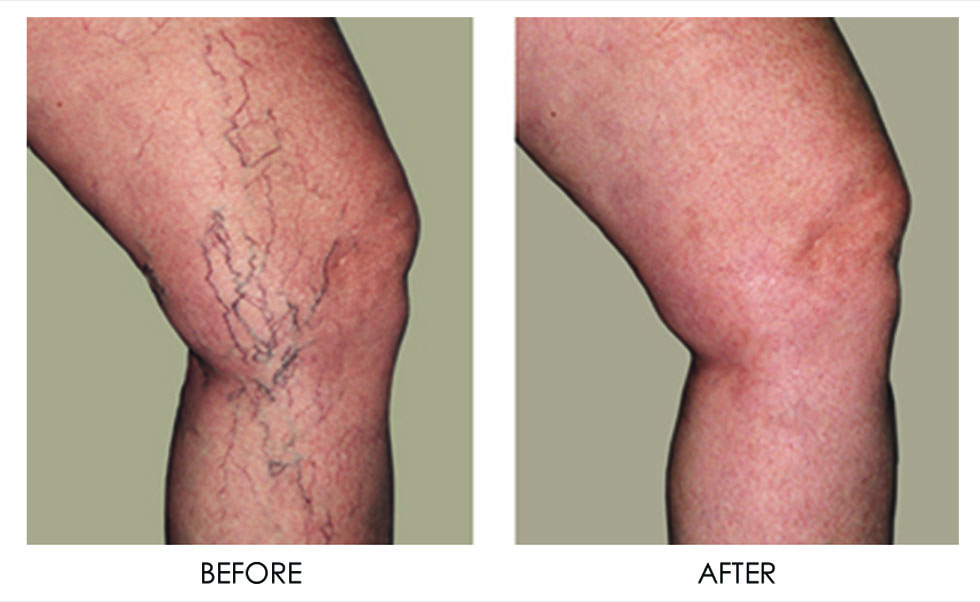 |
How is Sclerotherapy Performed?
Sclerotherapy is the preferred method for eliminating fine and large spider veins as well as
smaller varicose veins that are not suitable for the Radiofrequency ablation procedure.
The sclerosing solution is injected into the vein with a tiny needle. As the solution is injected, it displaces the blood within the vessel. When the solution comes in contact with the wall of the vein, it propels a chemical reaction at the cellular level. That causes the vein to die and heal shut. The abnormal veins then gradually fade and disappear. Sclerotherapy is performed in the doctor’s rooms. A typical session of sclerotherapy takes approximately 45 minutes to perform. However, it can take up to or over an hour to perform for cases that are more extensive. The first session can also take longer to perform as it is often the most intensive. It is not unusual to require more than one treatment session to attain the desired results, particularly for more extensive leg veins. The number of veins injected per session can vary, depending on the size, appearance and location of the veins, as well as, the patient’s overall medical condition. Dr. Popov will provide you with an approximate duration that the particular session should take and estimate the number of treatments that will be required after examining your legs.
What Kind of Results Can Be Expected?
Sclerotherapy is very effective for patients who have a cosmetic condition with no underlying medical cause to the aesthetic damage, such as venous reflux disease. It has also yielded exceptional results in more medicinal cases where larger perforator veins or varicosities were treated, often being the causal or “feeder” veins responsible for the visible cosmetic damage. It has even assisted in the healing of stubborn venous ulcers, by sclerosing the branches immediately responsible for “feeding” the ulcer. A 70-80% fading and dissipation of the treated veins is expected, although more than one treatment session may be required. The more extensive the appearance of abnormal veins, the more treatments will typically be required to get the desired results. Individual results will vary, as does everybody’s anatomy. If the doctor is not satisfied with the initial response to a scerotherapy session, often a higher concentration of the sclerosing solution will be used during the following session or an alternative solution will be used during subsequent sessions.

